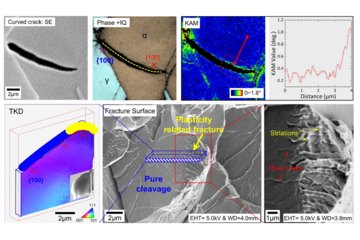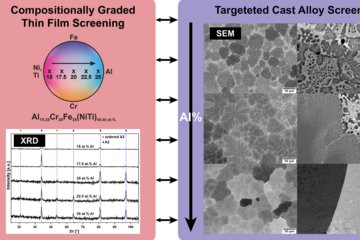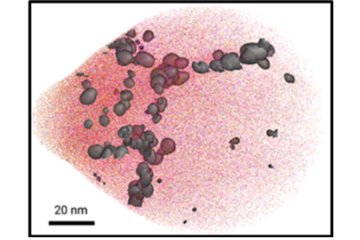All genres
401.
Journal Article
Confined chemical and structural states at dislocations in Fe–9wt%Mn steels: A correlative TEM-atom probe study combined with multiscale modelling. Acta Materialia 124, pp. 305 - 315 (2017)
402.
Journal Article
Short Communication on “Coarsening of Y-rich oxide particles in 9%Cr-ODS Eurofer steel annealed at 1350 °C”. Journal of Nuclear Materials 484, pp. 283 - 287 (2017)
403.
Journal Article
Elasto-viscoplastic phase field modelling of anisotropic cleavage fracture. Journal of the Mechanics and Physics of Solids 99, pp. 19 - 34 (2017)
404.
Journal Article
Multiscale characterization of White Etching Cracks (WEC) in a 100Cr6 bearing from a thrust bearing test rig. WEAR 370-371, pp. 73 - 82 (2017)
405.
Journal Article
Design of Mg alloys: The effects of Li concentration on the structure and elastic properties in the Mg–Li binary system by first principles calculations. Journal of Alloys and Compounds 691, pp. 15 - 25 (2017)
406.
Journal Article
Room temperature deformation of LPSO structures by non-basal slip. Materials Science and Engineering A: Structural Materials Properties Microstructure and Processing 682, pp. 354 - 358 (2017)
407.
Journal Article
Coupled Crystal Plasticity–Phase Field Fracture Simulation Study on Damage Evolution Around a Void: Pore Shape Versus Crystallographic Orientation. JOM-Journal of the Minerals Metals & Materials Society 69 (5), pp. 872 - 878 (2017)
408.
Journal Article
Superplasticity in a lean Fe–Mn–Al steel. Nature Communications 8, 751, pp. 1 - 6 (2017)
409.
Journal Article
The effects of prior austenite grain boundaries and microstructural morphology on the impact toughness of intercritically annealed medium Mn steel. Acta Materialia 122, pp. 199 - 206 (2017)
410.
Journal Article
Quantenmechanisch geführtes Design von TWIP-Stählen. Stahl und Eisen 137, p. 58 - 58 (2017)
411.
Journal Article
Comparison of Maraging Steel Micro- and Nanostructure Produced Conventionally and by Laser Additive Manufacturing. Materials 10 (1), 8 (2017)
412.
Journal Article
Diffusional-displacive transformation enables formation of long-period stacking order in magnesium. Scientific Reports 7, 4046, pp. 1 - 8 (2017)
413.
Journal Article
Konkurrenzlose Festigkeit durch extremes Umformen von Stahl. Stahl und Eisen 137 (8), p. 58 - 58 (2017)
414.
Journal Article
Cd and Impurity Redistribution at the CdS/CIGS Interface After Annealing of CIGS-Based Solar Cells Resolved by Atom Probe Tomography. IEEE Journal of Photovoltaics 7 (1), 7762819, pp. 313 - 321 (2017)
415.
Journal Article
Recent progress in microstructural hydrogen mapping in steels: quantification, kinetic analysis, and multi-scale characterisation. Materials Science and Technology 33 (13), pp. 1481 - 1496 (2017)
416.
Journal Article
In-process Precipitation During Laser Additive Manufacturing Investigated by Atom Probe Tomography. Microscopy and Microanalysis 23 (S1), pp. 694 - 695 (2017)
417.
Journal Article
Atomic scale characterization of white etching area and its adjacent matrix in a martensitic 100Cr6 bearing steel. Materials Characterization 123, pp. 349 - 353 (2017)
418.
Journal Article
Strong and Ductile Non-equiatomic High-Entropy Alloys: Design, Processing, Microstructure, and Mechanical Properties. JOM-Journal of the Minerals Metals & Materials Society 69 (11), pp. 2099 - 2106 (2017)
419.
Journal Article
Interstitial atoms enable joint twinning and transformation induced plasticity in strong and ductile high-entropy alloys. Scientific Reports 7, 40704 (2017)
420.
Journal Article
Reply to the ‘Comments on “Dental lessons from past to present: ultrastructure and composition of teeth from plesiosaurs, dinosaurs, extinct and recent sharks”’ by H. Botella et al., RSC Adv., 2016, 6, 74384–74388. RSC Advances 7 (11), pp. 6215 - 6222 (2017)











